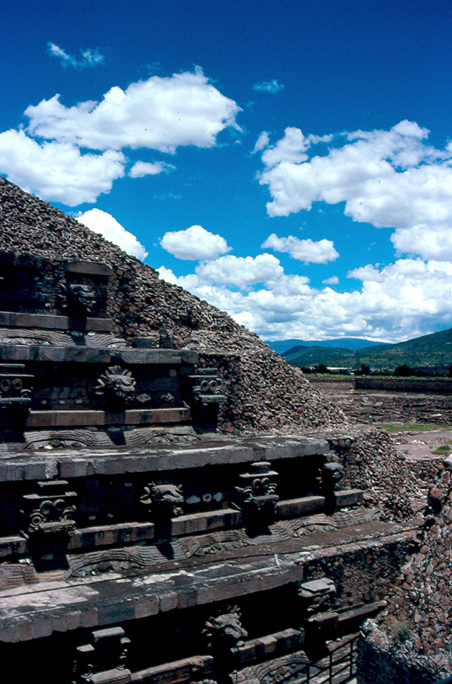Source: WTL© digitized analogue photograph taken on site.
Notes: On another side of the same temple, under a dramatic and beautiful summer sky in the central Mexican highlands, we see alternating sculptures of Quetzalcóatl and Tláloc. Remember that the sculptures we see on the side of this pyramid were discovered and covered in the 20th century after Teotihuacan was abandoned and then being gradually covered and buried for nearly a thousand years of accumulated sand, dirt, dust, and neglect so that now we can see some aspect of what this pyramid looked like when it was functioning as a religious site in a population of about 200,000 people.
Humanities question: Looking at all of the elements framed within this photograph, what does this image suggest to you about what life could have been in the years between approximately 200 CE and 700 CE?


